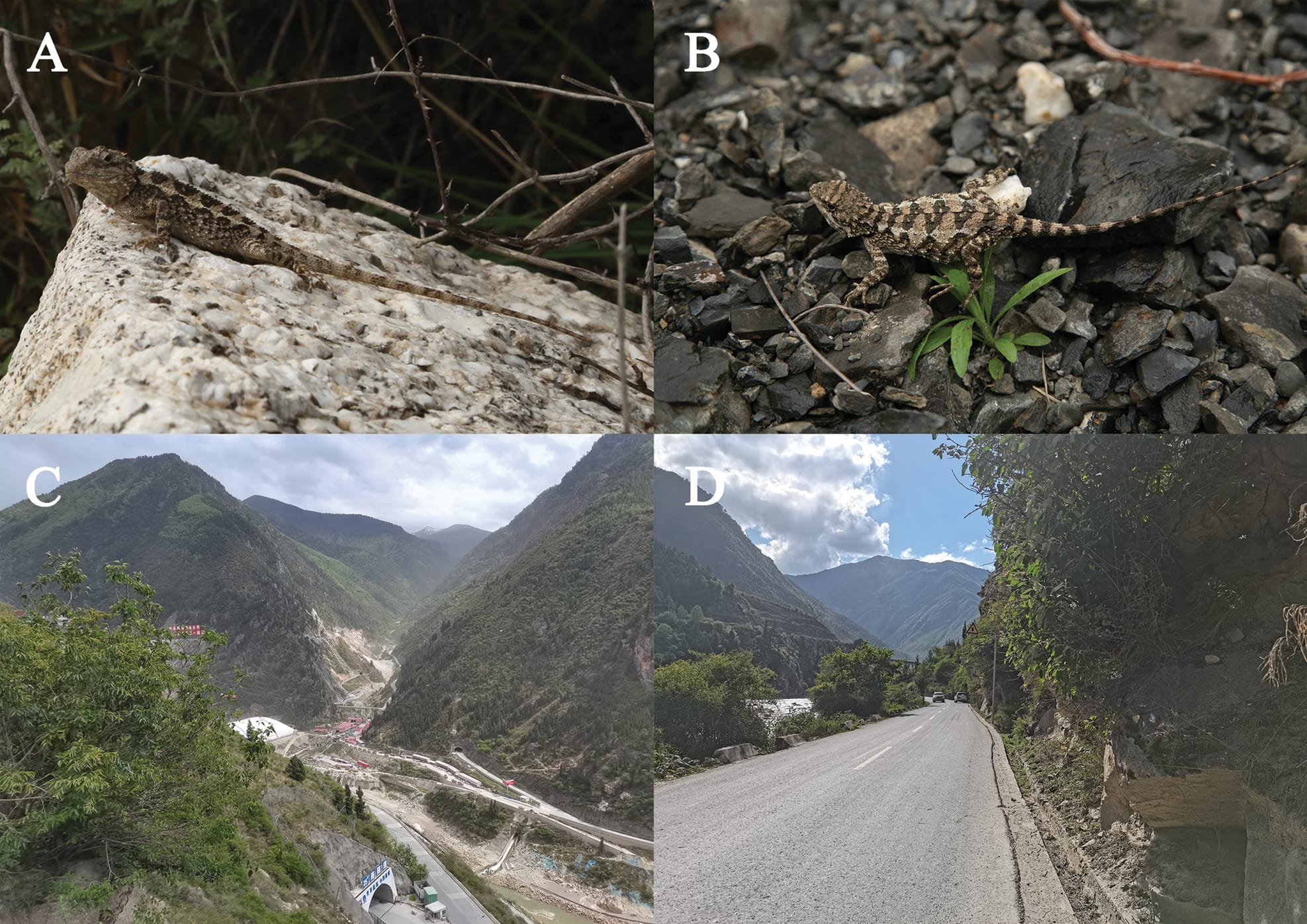Golden Tongued Lizard
New research suggests that the upper Dadu River valley in Sichuan Province, China, harbors previously unrecognized biodiversity, with the description of a new lizard species in the genus Diploderma. This finding, published in ZooKeys, underscores the value of ongoing surveys in understudied river valleys, potentially expanding our understanding of ecological diversity in this mountainous region.
Uncovering Hidden Diversity in the Dadu River Valley
The Hengduan Mountains, known for their rugged terrain and complex ecosystems, have long been recognized as a hotspot for endemic species. The genus Diploderma, part of the Agamidae family, includes lizards adapted to dry valley environments across East Asia. Prior studies identified three Diploderma species in the Dadu River valley: D. daduense, D. danbaense, and D. flaviceps. However, the upper reaches of the river remained relatively unexplored until recent field efforts.
Field surveys conducted since 2018 by researchers including Bo Cai from the Chengdu Institute of Biology revealed lizards with distinct traits not matching known species. "This discovery highlights the understudied biodiversity of the upper Dadu River," note the authors in their report, emphasizing how the area's semi-arid shrublands at elevations between 2,187 and 2,525 meters provide unique habitats.
Methodology: Combining Fieldwork, Morphology, and Genetics
To confirm the new species, the team employed a multi-faceted approach. Specimens were collected from sites near Shuangjiangkou in Barkam City and Jinchuan County. Live animals were photographed for color patterns, then euthanized humanely and preserved for analysis. Morphological measurements followed standard protocols, recording traits like snout-vent length (SVL—the distance from the snout tip to the cloaca) and tail length.
For genetic validation, the researchers sequenced the mitochondrial ND2 gene from liver tissues. This gene was amplified using primers from prior studies and compared to sequences from 46 other Diploderma species downloaded from GenBank. Phylogenetic analyses placed the new specimens in a distinct lineage within the D. flaviceps group, with genetic distances of at least 3.88%—a threshold indicating species-level divergence.
Principal component analysis (PCA) of size-corrected measurements further supported separation, showing the new species occupies unique morphospace compared to relatives. Data from males and females were analyzed separately to account for sexual dimorphism.
Key Findings: Distinct Traits of Diploderma bifluviale sp. nov.
Results indicated that the new species, named Diploderma bifluviale sp. nov. (meaning "of two rivers," referring to its location near the Dadu River confluence), differs from congeners in several ways:
- Size and Proportions: Adults have a shorter SVL (62.51–72.55 mm) and tail ratio (1.37–1.56).
- Coloration and Markings: Males feature lemon-chiffon dorsolateral stripes with serrated edges, a wheat-colored tongue, and no gular spot. The fourth toe, when adpressed forward, reaches the tympanum or shoulder area.
- Habitat Specificity: Found in warm-dry valleys, distinct from the habitats of close relatives like D. flaviceps.
Encouragingly, this brings the genus total to 49 species, with D. bifluviale adding to the morphological and ecological variety in the D. flaviceps group.

Implications for Conservation and Future Research
The discovery points to the Dadu River's role in fostering endemism, similar to other Hengduan valleys. As human activities like infrastructure development encroach on these areas, such findings could inform conservation priorities. However, the authors caution that more surveys are needed to assess population status and threats.
This work, led by Fengjing Liu, represents a step forward in reptile taxonomy, but as with many new descriptions, further ecological studies will be essential to understand its full significance.
